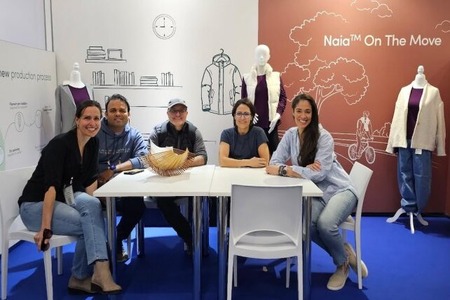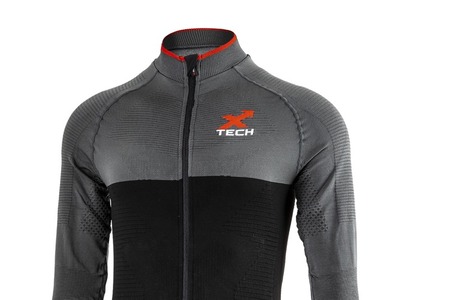
Making promotional apparel using recycled materials
YarnsandFibers News Bureau 2019-02-18 14:45:00 – JapanIn the current fashion market, the most widely used fabrics are textile blends, which have proven hard-to-recycle using traditional methods and technologies. In a bid to close the recyclability gap, H&M's charitable arm, the H&M Foundation, last year opened a pre-industrial sized ‘Garment to Garment’ recycling facility in Hong Kong. The facility uses innovative hydrothermal recycling technology to separate textile blends and will be used by H&M exclusively to begin with. The firm has, however, pledged to licence the technology so that it can be used by other fashion manufacturers and drive sector-wide change by 2020.
Garment recycling and gold medals - The launch of Asics’ marathon-based recycling scheme comes shortly after the firm unveiled its ‘Reborn Wear’ project in Japan. As part of a partnership with the 2020 Olympic and Paralympic Games in Tokyo, the company is aiming to collect at least 30,000 garments from the Japanese public before the games begin next summer through the scheme. Using mechanical separation methods, the collected garments will be recycled into yarn, which will be used to make the uniforms for Team Japan.
Several Olympians have donated their old kits to the project and taken to social media to encourage fans to do the same, urging them to help create closed-loop garments which are “sustainable, innovative and rich with memoriesâ€. Supporters include wrestler Saori Yoshida, sprinter Chisato Fukushima and former marathon runner Kenji Kimihara. The project is, perhaps, the most high-profile way in which Asics is moving to lower the carbon footprint of its products, in line with the 2C trajectory set out by the Paris Agreement. It is currently installing a series of energy efficiency technologies at its manufacturing sites and purchasing more renewable energy to power them.
Recycling challenges - Asics is furthermore re-designing its footwear and garment portfolio to include a higher proportion of low-carbon materials, including recycled polyester, bio-based plastic alternatives and cotton certified as sustainable.
Its headline ambition is to create a fully circular business model, in which none of its products ends up as waste. As it trying hard to meet this objective, Asics has committed to "continually invest" in the research and development of technologies which can recycle PCR fashion items into performance-quality sports products.
Asics is set to run a garment recycling scheme across eight of the largest European running events that it sponsors, in a bid to slash its carbon footprint and encourage consumer behaviour change. The Japanese sportswear giant has this week disclosed plans to offer garment take-back services at eight European marathon events by the end of 2019, starting with the Barcelona Marathon on 10 March. Under the scheme, Asics will install branded collection banks at its stores in cities which are hosting the marathons. Garments donated will be processed by textile recycling firm I:CO, which will separate them for reuse or mechanical recycling, while consumers will receive a discount voucher as an incentive for participating in the scheme.
As part of the marketing campaign for the initiative - and as part of its ambition to reduce the carbon footprint related its products by 55% by 2030 - Asics will make all promotional apparel for the eight races using recycled or renewable materials. The most commonly used material in this range will be post-consumer recycled (PCR) PET, as an Asics spokesman told.
The launch of the scheme comes after Asics’ target of reducing its Scope 3 (indirect) emissions by 55% was approved by the Science Based Targets initiative (SBTi) last August. The brand’s analysis found that the majority of these emissions are currently related to its products, its CSR and sustainability manager for Europe, the Middle East and Africa (EMEA) Romy Miltenburg explained.
Miltenburg said that, “Working on our global programme to reduce greenhouse gas emissions in alignment with the SBTi, we have identified that more than 80% of our CO2 emissions originate from the processes and materials we use to create our footwear and apparel and end of life treatment of sold products.†“As a product-driven company, shifting to more sustainable materials and engaging our customers and consumers on our journey to a circular business model are at the heart of our sustainability strategy.â€
Market Intelligence
Ask for free sample Report

experience
Customer Base
dedicated team
Countries Served Worldwide









